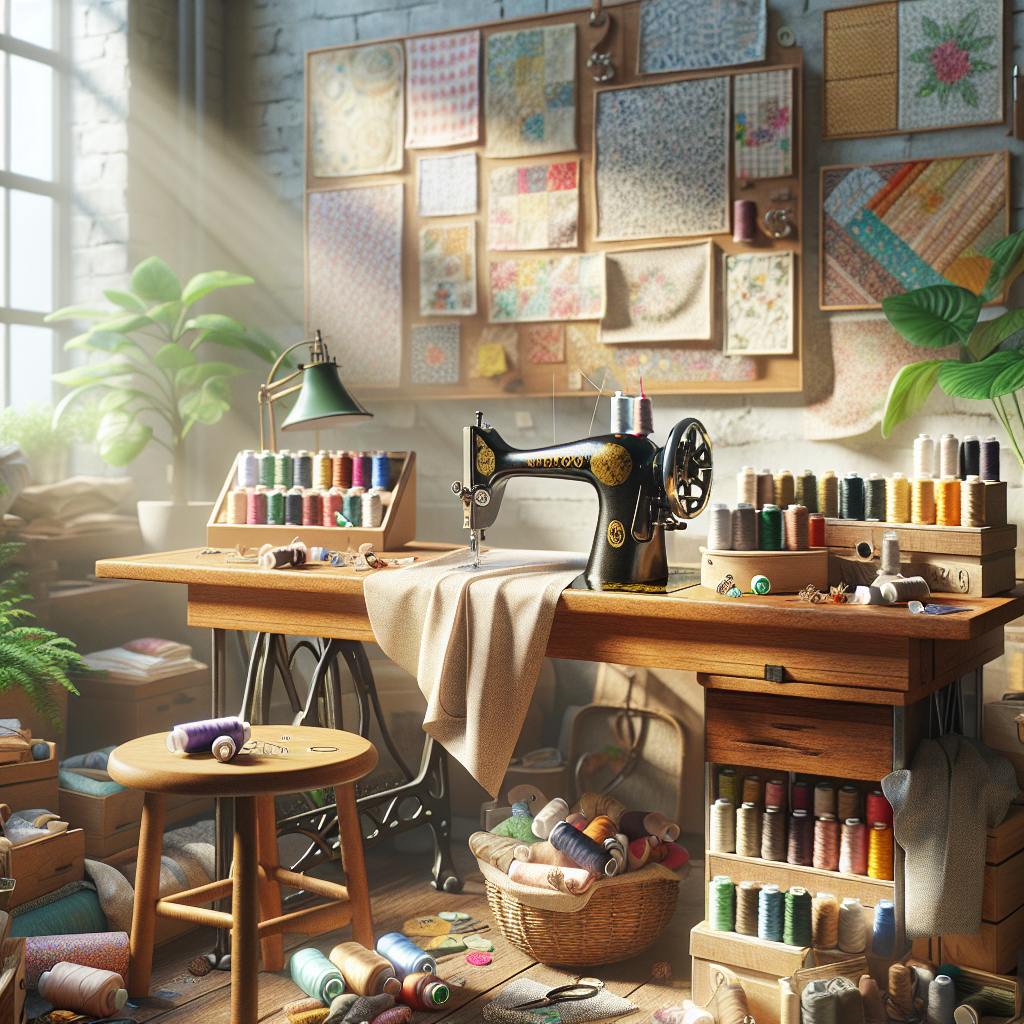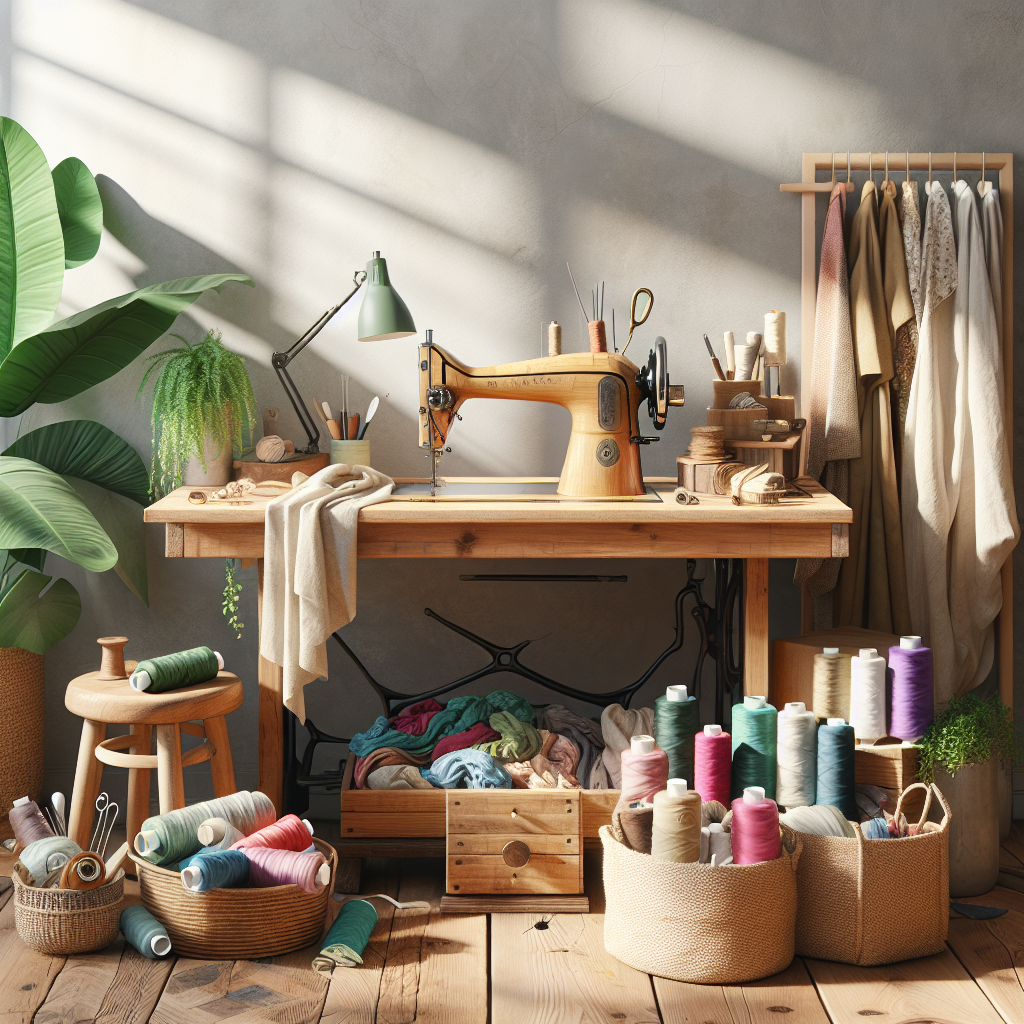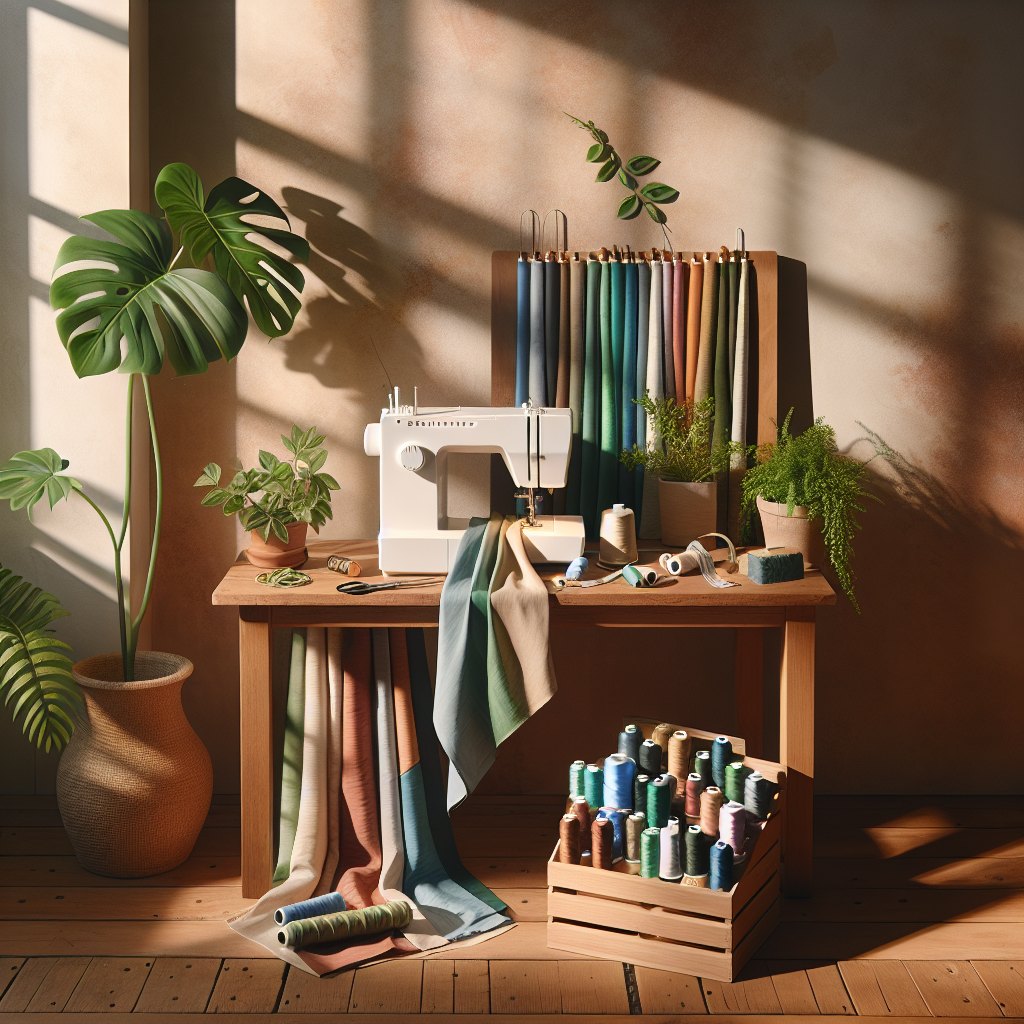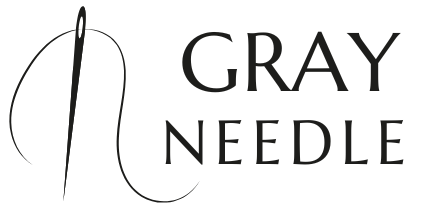Sewing is not just a hobby; it’s a form of expression and creativity that can also significantly impact our environment. As the world becomes increasingly aware of environmental issues, understanding the importance of sustainable sewing practices is crucial for every sewing enthusiast. By adopting these practices, we can contribute to a healthier planet while enjoying our passion.
Sustainable sewing refers to methods that prioritize eco-friendly materials, reduce waste, and promote ethical production. Here are some reasons why these practices are essential:
- Minimizing Waste: Traditional sewing often leads to fabric scraps and unused materials. Sustainable practices encourage the use of remnants creatively, thus reducing overall waste.
- Choosing Eco-Friendly Materials: Opting for organic or recycled fabrics can drastically decrease your carbon footprint. It supports sustainable agriculture and reduces the demand for harmful chemicals.
- Supporting Ethical Brands: Many brands now focus on sustainable practices, ensuring fair labor conditions and ethical sourcing. By supporting these brands, you promote a more responsible industry.
As you embark on your sustainable sewing journey, it’s vital to connect with others who share your passion. Visit our website to learn more and get started today! Click here.
Choosing Eco-Friendly Fabrics for Your Projects

When it comes to sustainable sewing, one of the most impactful decisions you can make is choosing eco-friendly fabrics for your projects. The type of material you select not only affects the quality of your finished product but also plays a crucial role in the environmental impact of your sewing endeavors.
Here are some key fabric options to consider:
- Organic Cotton: Grown without synthetic pesticides or fertilizers, organic cotton is a popular choice for eco-conscious sewers. It’s soft, breathable, and biodegradable, making it a fantastic alternative to conventional cotton.
- Linen: Made from the flax plant, linen requires less water and fewer chemicals in its production compared to cotton. Its durability and natural texture make it an excellent choice for a variety of projects.
- Bamboo Fabric: Bamboo is a rapidly renewable resource that can be processed into a silky soft fabric. It’s naturally antibacterial and biodegradable, making it an ideal option for sustainable clothing.
- Recycled Fabrics: Fabrics made from recycled materials, such as plastic bottles or old garments, help reduce waste by repurposing materials that would otherwise end up in landfills.
When selecting fabrics, it is also essential to consider the production processes and the lifecycle of the materials. Look for certifications that indicate sustainability, such as GOTS (Global Organic Textile Standard) or OEKO-TEX, which ensures that textiles are free from harmful substances.
By making informed choices about the fabrics you use, you can significantly reduce your environmental footprint while creating beautiful, high-quality pieces.
Minimizing Waste with Smart Cutting Techniques
Minimizing waste is a vital aspect of sustainable sewing, and utilizing smart cutting techniques can help you achieve this goal. By planning your cuts and layouts strategically, you can significantly reduce fabric scraps and make the most out of your materials.
Here are some effective methods to consider:
- Pattern Layout Planning: Before cutting, lay out your pattern pieces on the fabric to determine the most efficient arrangement. This helps to maximize the use of fabric and minimize leftover scraps.
- Use of Fabric Scraps: Instead of discarding small pieces of fabric, consider how they can be incorporated into your projects. These scraps can be used for pockets, embellishments, or even patchwork designs, giving new life to what might otherwise be waste.
- Zero-Waste Patterns: Look for patterns specifically designed to eliminate fabric waste. These patterns use every inch of fabric, often incorporating creative design elements that utilize leftover material.
- Cutting Techniques: Employing techniques such as fussy cutting or layer cutting can help you make precise cuts while reducing waste. Fussy cutting allows for the selection of specific fabric features, ensuring that each piece is intentional.
By integrating these smart cutting techniques into your sewing practice, you can not only create stunning pieces but also contribute to a more sustainable crafting culture. Every small effort counts in reducing waste and promoting eco-friendly practices.
Utilizing Vintage and Upcycled Materials Effectively

One of the most rewarding aspects of sustainable sewing is the ability to utilize vintage and upcycled materials effectively. Not only does this practice reduce waste, but it also adds unique character and charm to your creations. Here’s how you can incorporate these materials into your sewing projects:
1. Source Wisely: Explore local thrift stores, flea markets, and online marketplaces for vintage fabrics, garments, or textiles. You can often find high-quality materials at a fraction of the cost, and every piece has its own story.
2. Upcycling Garments: Instead of discarding old clothes that no longer fit or serve their purpose, consider transforming them into something new. For instance, you can turn a worn-out denim jacket into a stylish tote bag or repurpose a vintage dress into a trendy top.
3. Mix and Match: Vintage fabrics can beautifully blend with modern materials. Experiment with different textures, patterns, and colors to create unique combinations that stand out. This not only enhances your project but also showcases your creativity.
4. Repair and Refurbish: Before cutting into a vintage piece, assess if it can be repaired or refurbished. Simple alterations can breathe new life into old garments, allowing them to be wearable once again.
By embracing vintage and upcycled materials, you not only foster a sustainable sewing environment but also celebrate the beauty of craftsmanship and history. Each piece becomes a canvas for your imagination, making your sewing journey even more fulfilling.
Implementing Sustainable Sewing Tools and Supplies

Choosing the right tools and supplies is crucial for any sewing enthusiast, especially when you aim to practice sustainable sewing. Implementing sustainable sewing tools and supplies not only minimizes your environmental footprint but also enhances the overall quality of your projects. Here are some tips on how to make eco-friendly choices:
1. Opt for Eco-Friendly Fabrics: Look for materials that are organic, certified by GOTS (Global Organic Textile Standard), or made from recycled fibers. Fabrics like organic cotton, linen, and Tencel are excellent choices as they are produced with minimal environmental impact.
2. Choose Sustainable Tools: Invest in sewing tools made from sustainable materials. For instance, select scissors and rotary cutters with recycled handles, and consider using wooden or bamboo sewing notions instead of plastic ones.
3. Reusable Supplies: Ditch the single-use items such as plastic pins and disposable measuring tapes. Instead, use biodegradable or reusable alternatives like glass head pins and fabric measuring tapes. This reduces waste and contributes to a greener sewing practice.
4. Maintain Your Tools: Proper care and maintenance of your sewing tools can extend their lifespan. Regularly sharpen scissors, clean your sewing machine, and store your supplies in a way that prevents damage. This not only saves money but also reduces the need for replacements.
By implementing sustainable sewing tools and supplies, you not only contribute to a healthier planet but also create a more enjoyable and efficient sewing experience. Each choice you make leads to a more sustainable crafting journey.
Creating a Community Around Sustainable Sewing Initiatives

Building a community around sustainable sewing initiatives is essential for fostering creativity, sharing knowledge, and encouraging eco-friendly practices among sewing enthusiasts. Engaging with like-minded individuals amplifies your efforts and creates a supportive environment for sustainable crafting. Here are some ways to cultivate such a community:
1. Join Online Forums and Social Media Groups: Platforms like Facebook, Instagram, and specialized sewing forums are great places to connect with others who share your passion for sustainable sewing. Participate in discussions, share your projects, and seek advice from fellow sewers.
2. Organize Local Sewing Meetups: Whether it’s a casual get-together or a more structured workshop, organizing local sewing meetups can foster relationships and promote sustainable practices. Share tips, swap materials, and inspire each other to create eco-friendly projects.
3. Collaborate on Sustainable Projects: Encourage group projects that focus on sustainability, such as community quilts made from upcycled fabrics or workshops that teach others how to sew with eco-friendly materials. This not only strengthens community ties but also spreads awareness about sustainable sewing.
4. Share Resources and Knowledge: Create a shared resource list that includes links to tutorials, sustainable fabric suppliers, and eco-friendly sewing tools. By sharing valuable information, you empower others to make informed choices in their sewing endeavors.
5. Support Local Artisans: Promote local artisans who utilize sustainable practices in their work. By supporting these creators, you help to strengthen your local economy while also encouraging ethical production methods.
Building a community focused on sustainable sewing initiatives is a rewarding endeavor. It cultivates a rich environment of creativity, learning, and support. Visit our website to learn more and get started today! Click here.

